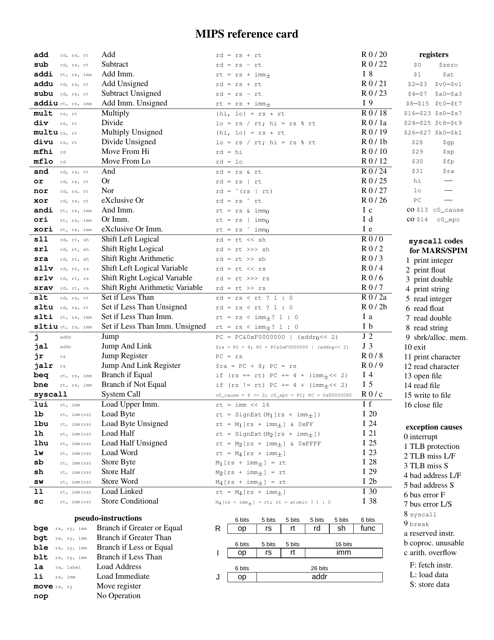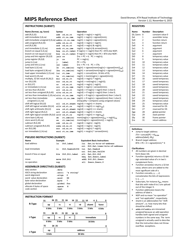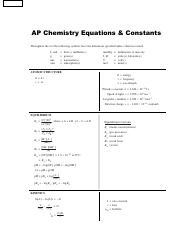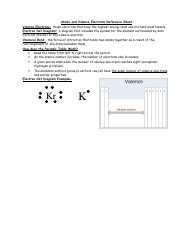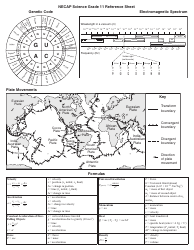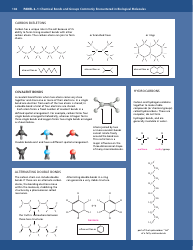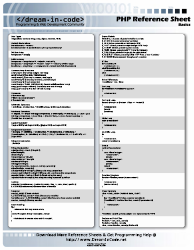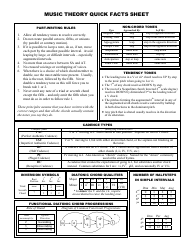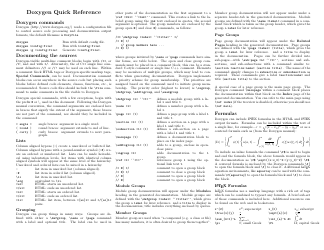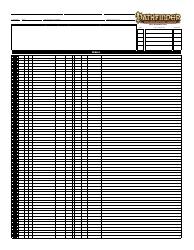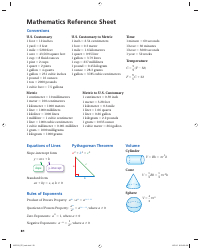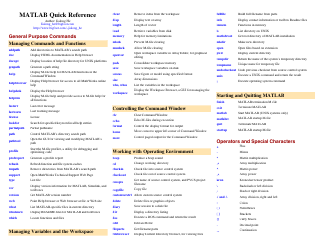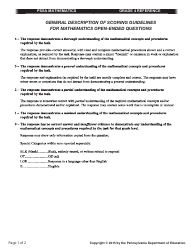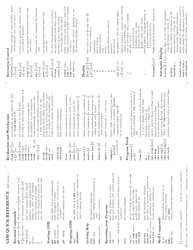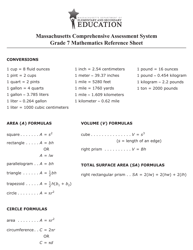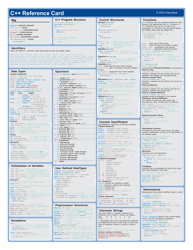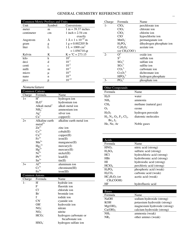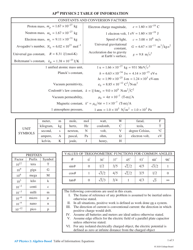Mips Reference Sheet
The MIPS reference sheet is a document that provides a quick reference guide for the MIPS architecture, which is a computer instruction set architecture used in some processors. It includes information about the different instructions and their formats, registers, memory management, and other key aspects of the architecture.
FAQ
Q: What is a MIPS reference sheet?
A: A MIPS reference sheet is a concise document that provides information about the MIPS architecture and instruction set.
Q: What is the MIPS architecture?
A: The MIPS architecture is a type of computer processor architecture commonly used in embedded systems.
Q: What is an instruction set?
A: An instruction set is a collection of instructions that a processor can execute.
Q: What does MIPS stand for?
A: MIPS stands for Microprocessor without Interlocked Pipeline Stages.
Q: What are some key features of the MIPS architecture?
A: Some key features of the MIPS architecture include a simple and streamlined instruction set, a load/store architecture, and a large number of general-purpose registers.
Q: What is the difference between a load/store architecture and a register-memory architecture?
A: In a load/store architecture, data must be explicitly loaded from memory into registers before it can be operated on, and the results must be explicitly stored back to memory. In a register-memory architecture, instructions can operate directly on memory.
Q: What is a register?
A: A register is a small amount of fast storage within the processor that can hold data and instructions.
Q: What is the purpose of a branch instruction?
A: A branch instruction is used to alter the normal sequence of program execution by jumping to a different instruction based on a specified condition.
Q: How many general-purpose registers are there in the MIPS architecture?
A: There are 32 general-purpose registers in the MIPS architecture.
Q: What is the purpose of a jump instruction?
A: A jump instruction is used to transfer program control to a different part of the program, usually by specifying a memory address to jump to.
